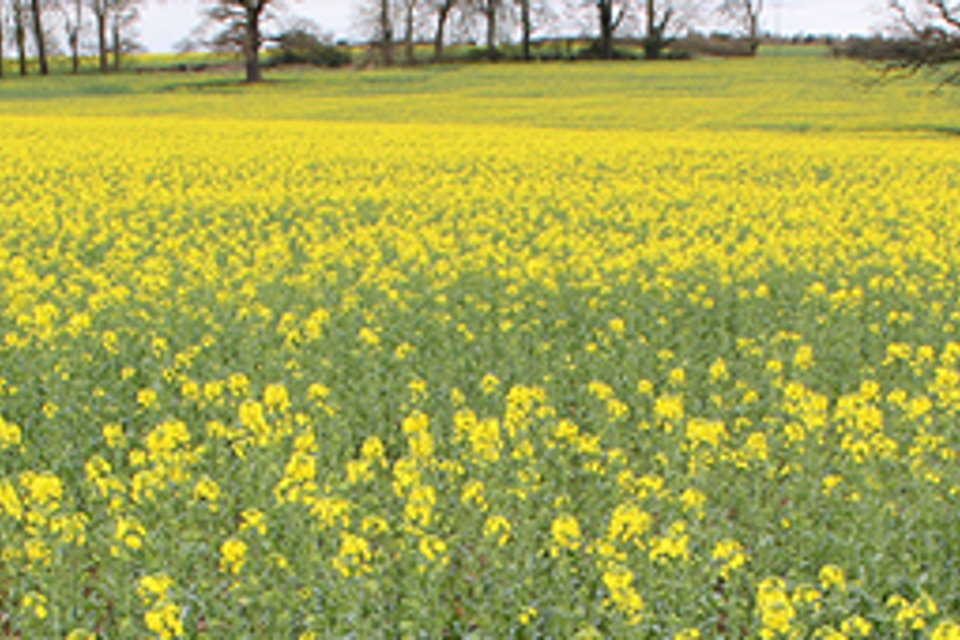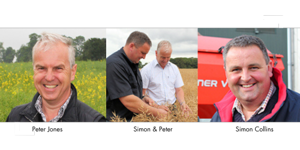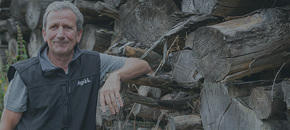
Soil Centred OSR Improvements
Case Study - 28.08.14
Better soils push up OSR yields in Midlands
A focus on good soil management is pushing oilseed rape yields up from 2.5t/ha to 4t/ ha on the Chillington Estate near Wolverhampton.
Farm manager, Simon Collins, has been working with Agrii agronomist, Peter Jones, for the past six years to overcome barriers to oilseed rape performance typical of the West Midlands.
But the pair are consistently improving yields by concentrating on better crop establishment, good soil management, timeliness and precision.
The estate is also running a unique field-scale Agrii study of OSR performance, from seven separate commercial establishment systems. It's hoped this yields further insight for more improvements.
Faster, reliable establishment
“What is needed more than anything else is a faster establishment system that combines sub-soiling before rape, with the quality seedbeds we get from the plough and power harrow/drill,” says Peter.
“We have to get the winter OSR off to the best possible start to give it enough of an edge over an abundance of game birds and pigeons, courtesy of well over 324ha of woodland criss-crossing the 486ha arable area,” he says.
This has always been challenging, though, he says. The rape has to go in after wheat in the four-year arable rotation, as the barley ground grows stubble turnips for the 1,500-ewe lamb enterprise.
“Add to this the fact that all the straw is baled, so early drilling is out. Equally, the largest field is 11ha, which means drilling can’t be nearly as fast as those with wide open arable spaces. Soils that vary from pot clay to blow-away sand don’t help either,” says Peter.

Understanding soils is central
Central to the improvements being made is a far better understanding of the estate’s soils: Much of the land is hungry, and the estate doesn’t have access to useful supplies of FYM. Baling all the straw presents a further challenge to organic matter, as well as potash levels.
Perhaps the biggest soil-based obstacle to oilseed rape performance initially identified by Simon and Peter, was serious compaction built-up over the years, on the sandy ground in particular.
Introducing sub-soiling in the rotation helped tackle this ahead of every OSR crop, despite the extra time pressures it placed on establishment.
Since then, SoilQuest scanning has revealed the true extent of the variation in the estate’s glacial deposit soils. Each 8-10ha field, for example, typically has four or five different soil types with pHs down to well below 6.0, and TSP recommendations varying from zero to 145 kg/ha.
This makes the variable rate P, K and lime applications (which have now also become a matter of course) especially valuable.
“The vigorous, fast-developing hybrids like DK ExPower we’ve switched to growing are an immense improvement on the pure lines of the past,” says Peter.
“Now we have the varieties with early get-up-and-go we need, varying their sowing rate to individual SoilQuest management zones should help us achieve the 20-25 plants/m2 we’re after – and with far greater consistency and less risk across every part of every field.
“Varying the nitrogen we apply should also give advantages in securing the even, well-branched canopies we want from modest annual nitrogen applications of 150-160 kg//ha. In so many ways, precision agronomy looks like being a real game-changer here,” says Peter.
Adding flexibility
Everything really came together well with winter rape in 2013/14, allowing the crop to take full advantage of favourable growing conditions to break all performance records.
Simon and Peter have added a valuable extra string to the estate’s bow by introducing spring rape into the rotation – as a permanent fixture for the most difficult fields, and a fall-back for any that can’t be drilled in a difficult Autumn.
That way they hope they’ll never have to face what used to be the regular task of ripping out winter rape because of poor establishment.
“With Peter’s help and Agrii’s technical resources, we’re making winter rape establishment so much better and more reliable these days,” said Simon.
“And the right one-pass system should enable us to improve performance and reduce risks still further. But, should the weather turn against us or we run out of time, we’ll just stop drilling and leave things for the Spring rather than muddling-in the crop.”

Keys to Success
Simon and Peter’s keys to OSR success include;
- Routine sub-soiling before the OSR to overcome compaction, on light soils in particular
- RHIZA soil mapping to reveal the details and extent of the estate’s soil variations
- Variable annual P, K and lime applications to RHIZA field management zones
- Faster developing, vigorous hybrid varieties with strong disease and pod-shatter resistance
- Timely nitrogen, trace element, fungicide and PGR use based on thorough field-walking
- A spring rape alternative for the most difficult fields and as a fall-back in a difficult Autumn
Join Our Community

Agrii X
We love engaging with clients and partners. Give us a follow and let's share stories for the community.

Agrii Instagram
A picture paints a thousand words. Follow us on Instagram to see what we are up to.

Agrii Facebook
Follow us on the worlds biggest social media site for the latest news and events straight to your feed.

Agrii LinkedIn
If you are all about the business, connect with us on LinkedIn to build your network
Stay In Touch

Journal Sign-Up
Receive email updates on topical news and information from around Agrii and UK Farming.

Listen To Our Podcasts
Listen to the Tramlines Podcast. Fortnightly chat about agriculture and trials with your host Tony Smith.

Agrii Insights
Read essential agri intelligence for profitable farming.

Find an Event
Join us for our upcoming events and tours.



